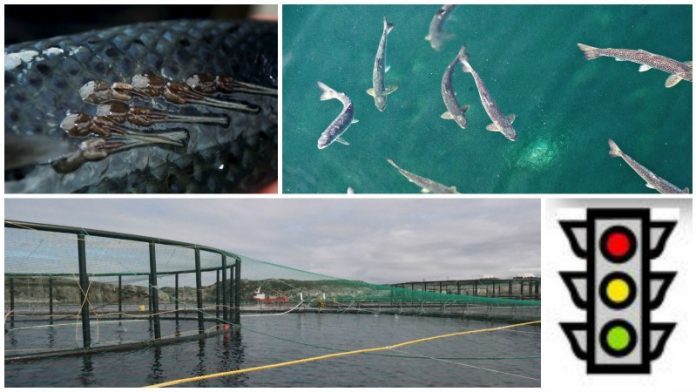The new regulation came into force 15th of October.
The Norwegian Department of Fisheries and Aquaculture has now divided the Norwegian west coast into 13 zones.
Each zone will be given a green, amber, or red light, based on the number of sea lice in the given area. The new regulations have been developed in an effort to reduce the impact of lice on wild salmon.
A green light means farmers might be offered production growth, a red light means reduction, while amber means it has to stay where it is.
Not decided yet
The directorate is yet to decide which areas have to reduce their production, but the current proposal indicates that Zone 3 (from Karmoy to Sotra in western Norway) will get a red light.
Leroy, Marine Harvest, Bremnes Seashore, Alsaker Fjordbuk, and other major Norwegian salmon companies, have the majority, or part, of their production in this zone.
“It’s coming when it comes. It is commercially-sensitive information, which will be sent out after the stock exchange opens,” said the Directorate of Fisheries’ press contact.
“Zone three (Karmoy-Sotra) is (currently) red, but the signals from politicians indicate that the biomass will not go down this year,” added Leni Marie Lisetter, of the Directorate of Fisheries.
November
The Directorate had announced that the information would be published at some point after 15th of October. Salmon Business understands that we’ll most likely have to wait a few weeks into November before the growth and reduction are decided.
However, production reduction won’t come into force before 2019, while growth won’t be offered before next year.
“I have no information about when growth will be decided and offered,” said Lene Kristin Royrane-Lotvedt of the Directorate of Fisheries.


